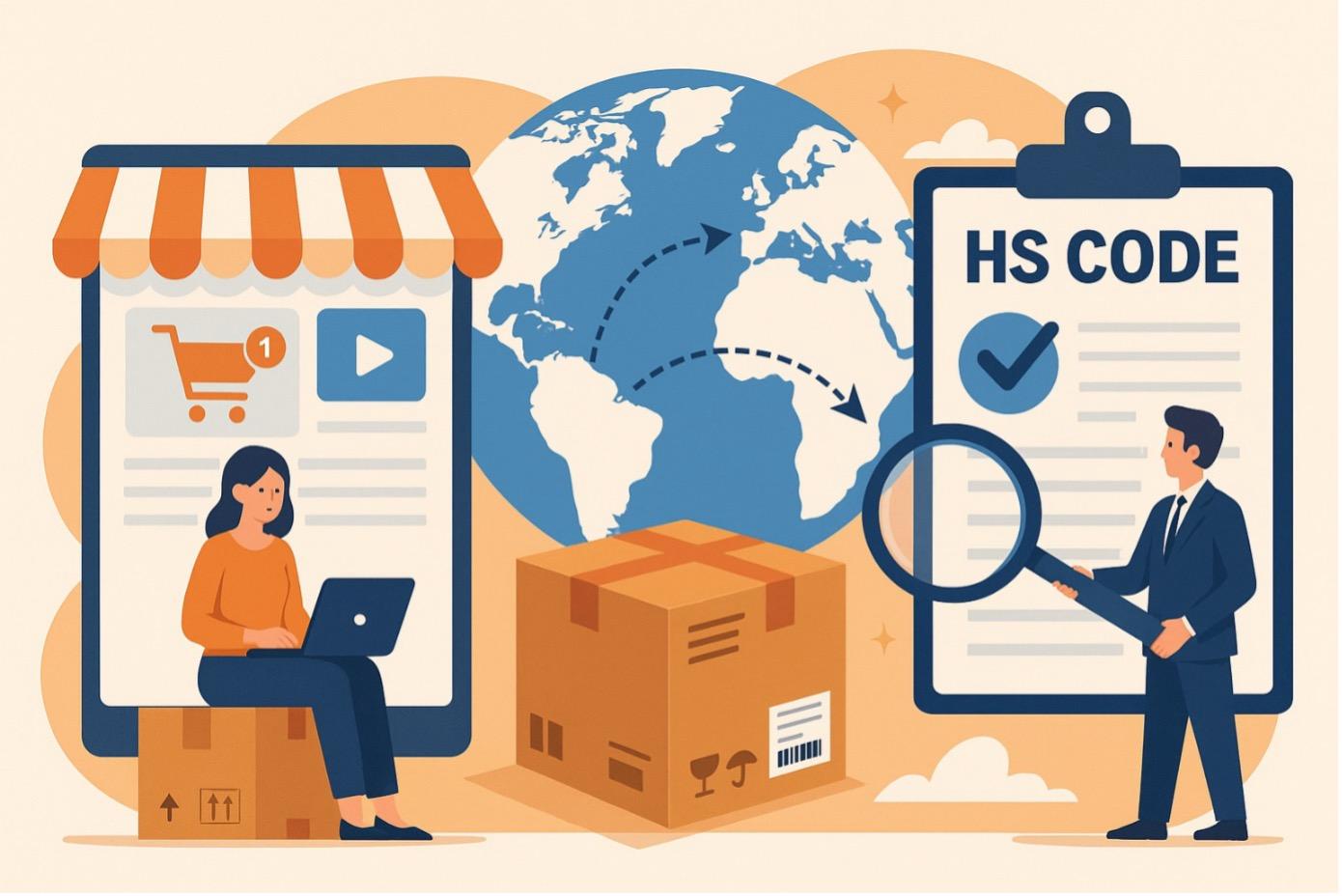
Have you recently considered selling your products online?
Today, it's easier than ever for small businesses and individuals to reach thousands of customers through popular e-commerce platforms, often without significant advertising costs or logistical complications. And yes, that includes customers who live outside your country. In other words, you can now export your products through online channels, a practice commonly known as cross-border e-commerce.
No wonder cross-border e-commerce is making headlines. From B2B and B2C to online marketplaces and direct-to-consumer models, digital trade is booming, and the numbers prove it. Global e-commerce sales continue to climb rapidly, with cross-border transactions accounting for an ever-increasing share. The global cross‑border e‑commerce market is projected to grow from US $477.5 billion in 2024 to over $550 billion in 2025. Consumer behavior highlights that 59% of shoppers worldwide have made at least one international online purchase, and 35% buy from foreign retailers at least once a month. In short, there's no doubt: the potential is massive.
With such massive potential, it's no surprise that businesses everywhere want a piece of the action. Thousands of sellers are already active in this space, and more join every day. But here's the key question:
Can all these sellers participate effectively in cross-border e-commerce?
The short answer is yes, but only if they understand what it takes to ship products across borders.
Unlike domestic sales, cross-border e-commerce involves additional procedures, regulations, and documentation. And the very first step (the foundation for everything else) is this:
Correctly classifying your product and determining its HS Code.
What is an HS Code?
The Harmonized Commodity Description and Coding System generally referred to as "Harmonized System" or simply "HS" is a multipurpose international product nomenclature developed by the World Customs Organization (WCO).
The system is used by more than 200 countries and economies as a basis for their customs tariffs and for the collection of international trade statistics. Over 98 % of the merchandise in international trade is classified in terms of the HS.
Why Correct HS Classification Is So Important
Correct HS classification isn't just a bureaucratic requirement. It's the backbone of successful cross-border trade. Each product you ship internationally must be classified with a precise HS code that determines:
- Customs Duties: How much you or your buyer will pay in taxes and tariffs.
- Import/Export Restrictions: Whether your product is allowed in the destination country.
- Trade Agreements: Whether your product qualifies for preferential treatment under FTAs (like EU-Turkiye Customs Union or USMCA).
- Statistical Reporting: How your product contributes to national trade data.
An incorrect HS code can lead to:
- Delays at customs
- Seizure of goods
- Fines or penalties
- Damage to your seller reputation
So, getting it right is not optional. It's essential.
Why Human Classification Is No Longer Enough
Traditionally, businesses relied on customs brokers, internal compliance staff, or manual lookups to determine HS codes. This approach might still work, albeit inefficiently, for large companies that have dedicated resources and staff. But for e-commerce sellers dealing with:
- Thousands of SKUs
- Multiple product categories
- Sales across dozens of countries
- Fast-changing inventories
...manual classification simply can't keep up.
Even expert classifiers struggle with:
- Vague or inconsistent product descriptions
- Ambiguous distinctions between similar codes
- Evolving customs rulings in different countries
In short, the complexity and scale of modern e-commerce have outgrown the limits of human processing power.
Enter AI-Powered HS Code Classification
To overcome these challenges, a new generation of tools has emerged, powered by Artificial Intelligence (AI) and machine learning. These systems can:
- Analyze product descriptions, specifications, and even images
- Determine the most accurate HS code accordingly
- Adapt to country-specific tariff schedules
- Learn from binding tariff databases, customs rulings, and trade history
With AI-powered tools like HSCalculusAI®, businesses and online marketplaces can classify thousands of products instantly and with high accuracy, reducing risk, saving time, and ensuring compliance across borders.
In the fast-paced world of cross-border e-commerce, speed and precision are everything. AI is no longer a nice-to-have. It's a must-have.
Making HS Classification Smarter
As cross-border e-commerce continues to grow, so does the need for smarter, faster, and more reliable trade processes. Correct HS code determination lies at the very center of this transformation, impacting everything from compliance and customs clearance to delivery timelines and customer satisfaction.
While manual methods may still work in limited cases, they're no longer scalable or sustainable for today's digital trade environment. That's where intelligent tools step in.
Solutions like HSCalculusAI® have been developed to meet these modern demands by combining artificial intelligence with global customs data to offer fast, consistent, and country-aware classification. By analyzing product descriptions and even images, tools like this help businesses classify their products more accurately, reducing the risk of misclassification and streamlining the export process.
For small businesses, online marketplaces, and global sellers alike, investing in smarter classification methods isn't just about staying compliant. It's about staying competitive.
Related Articles
No related posts available at the moment.